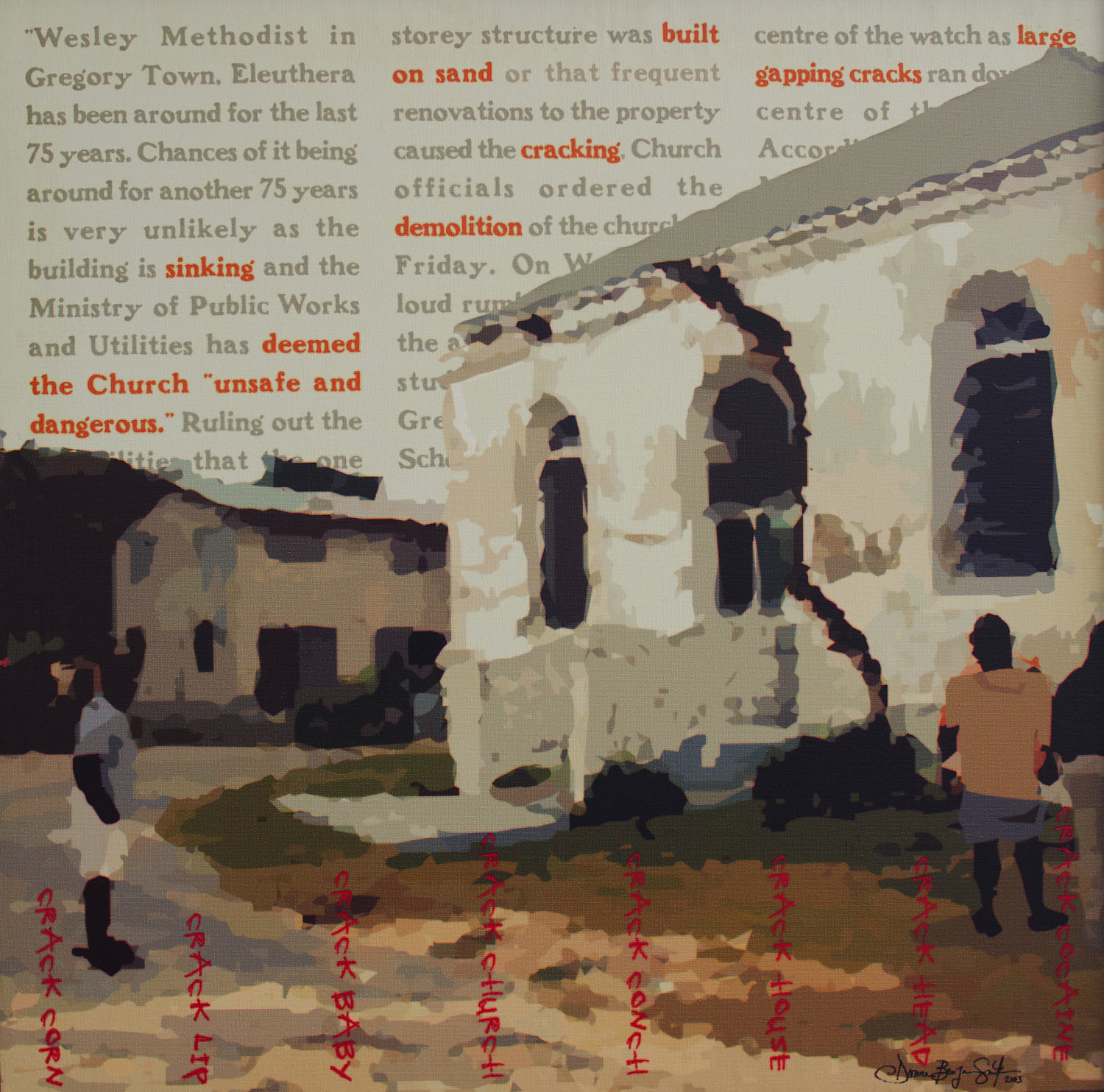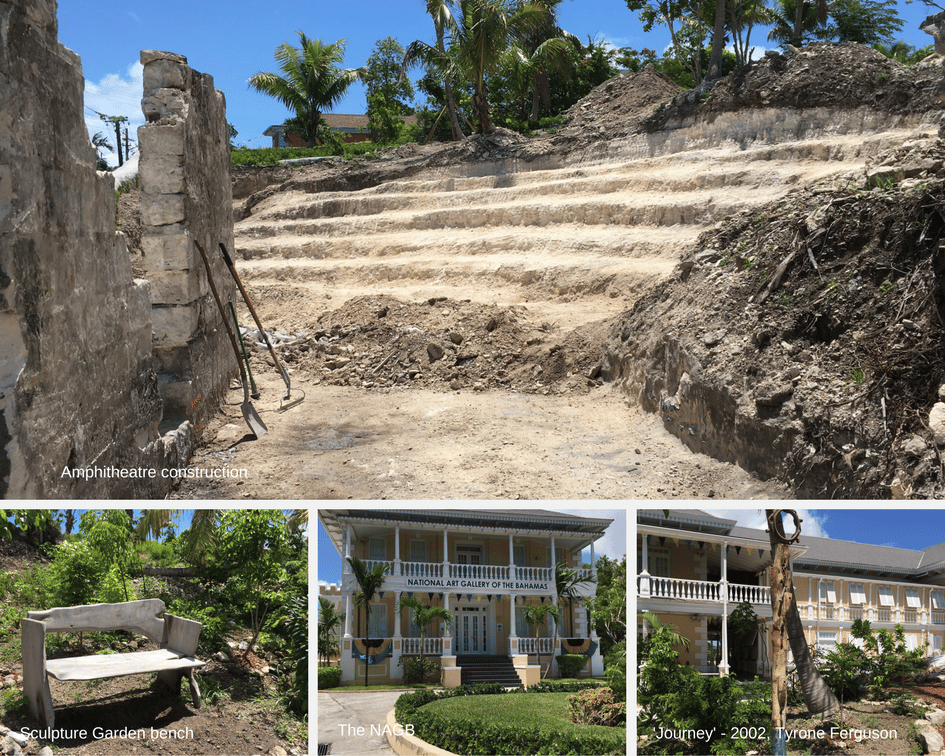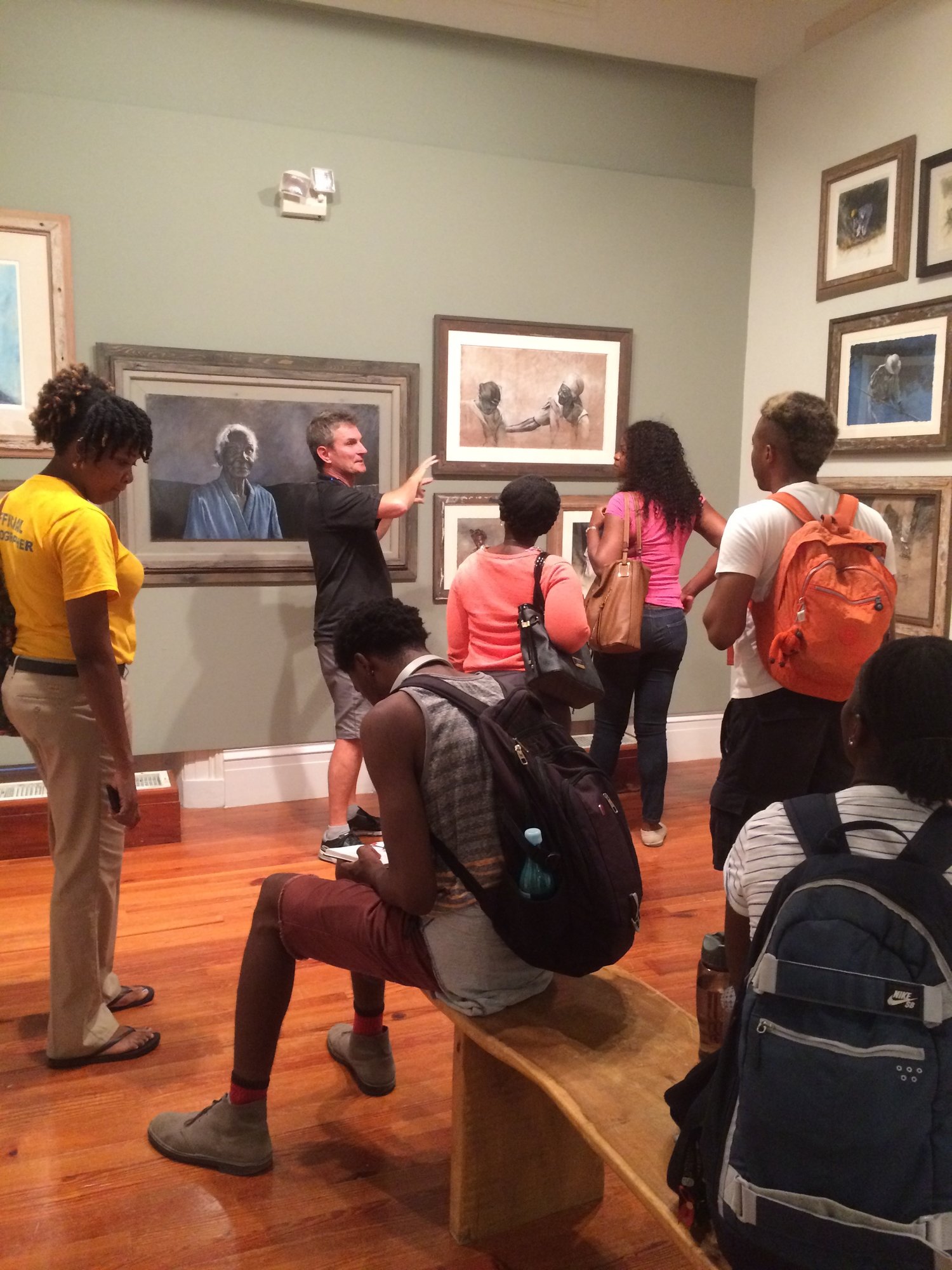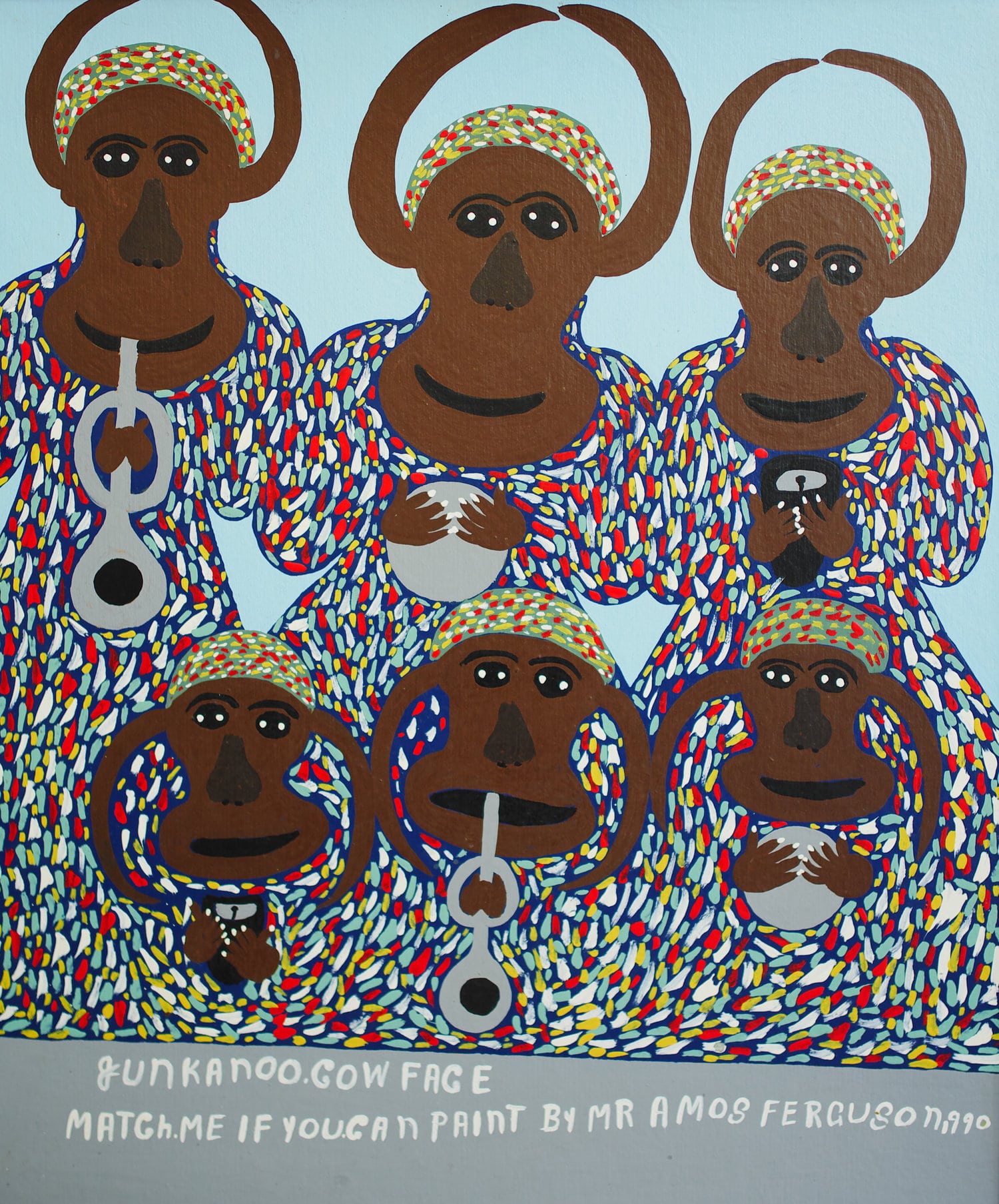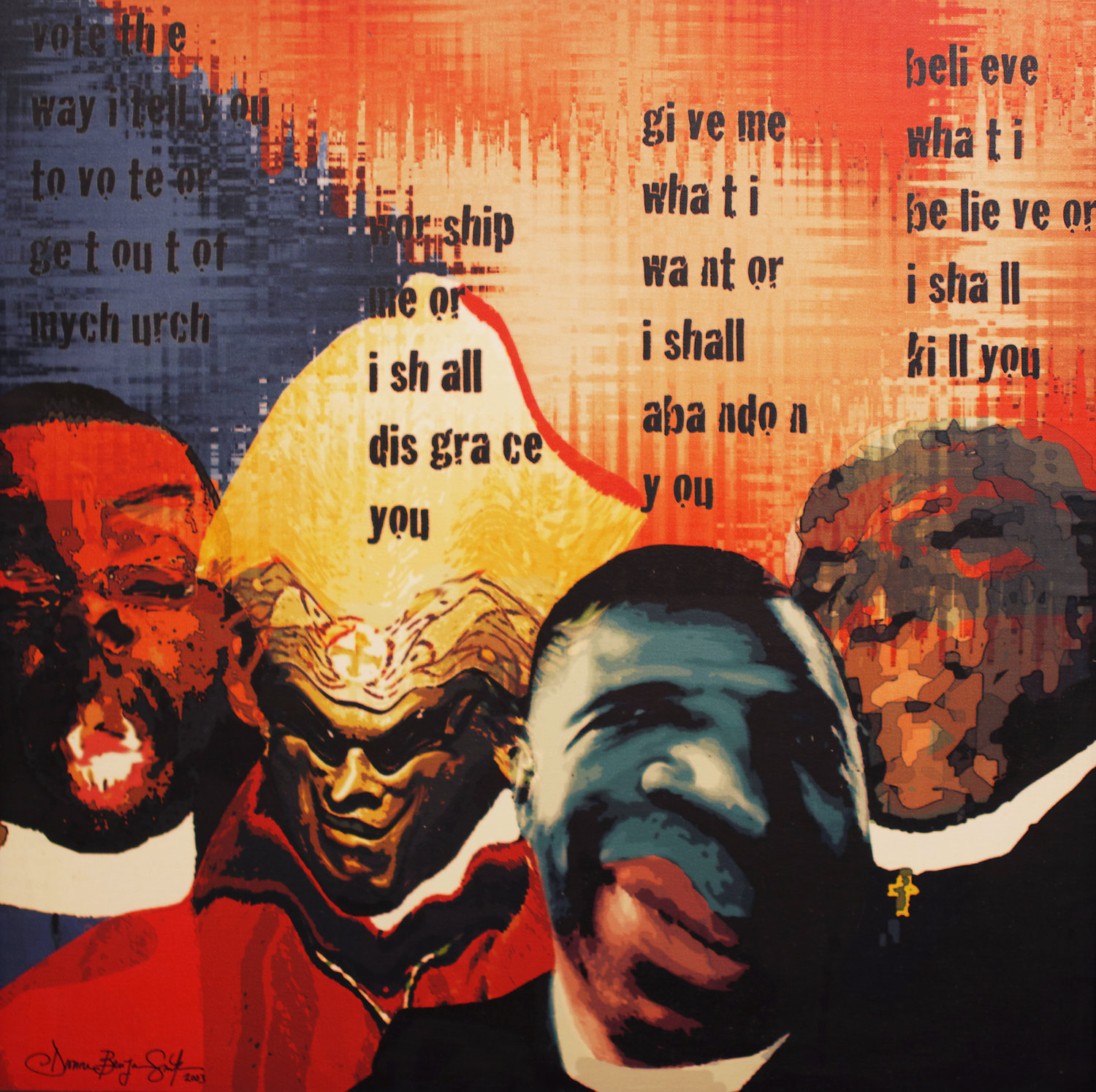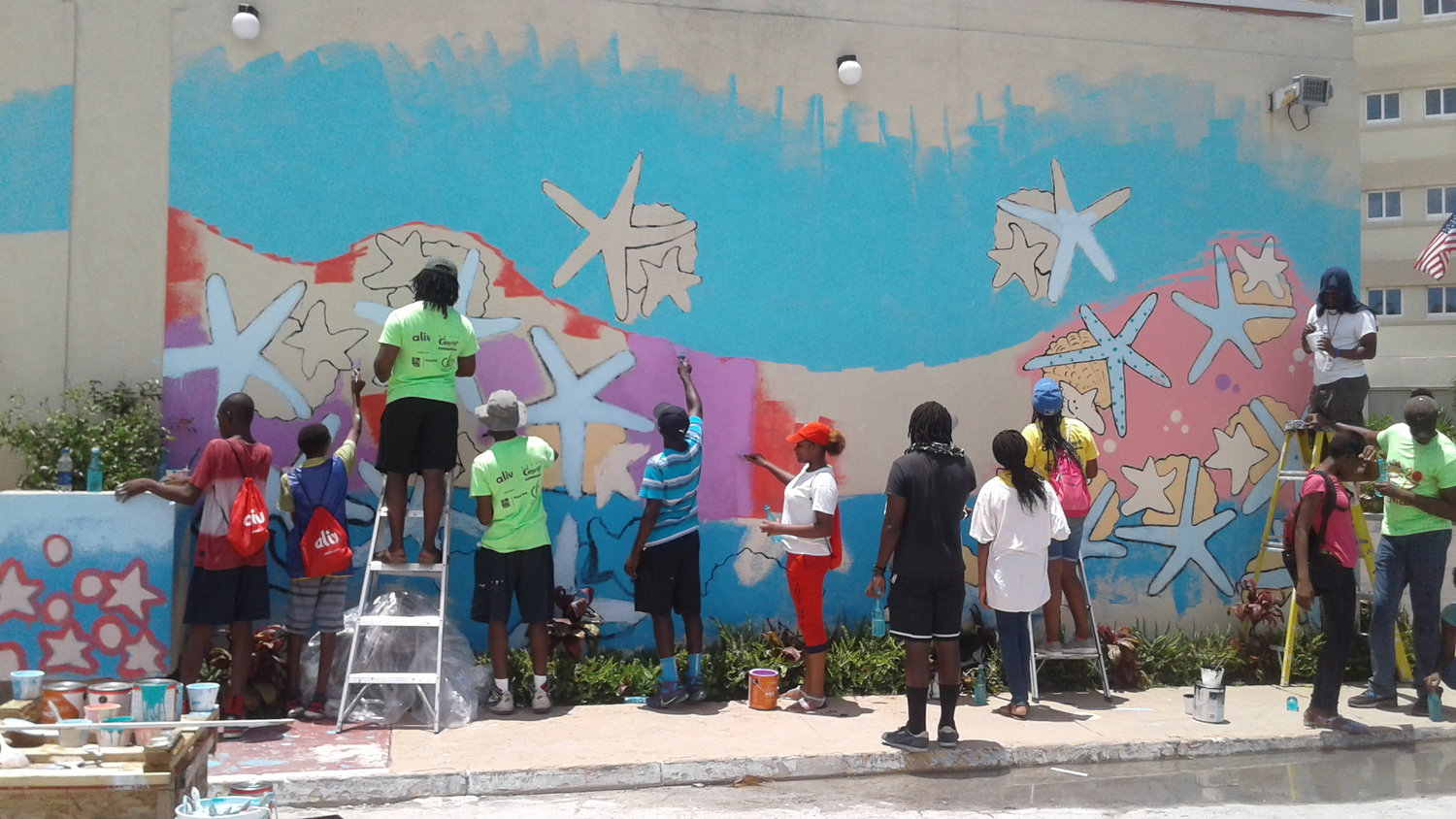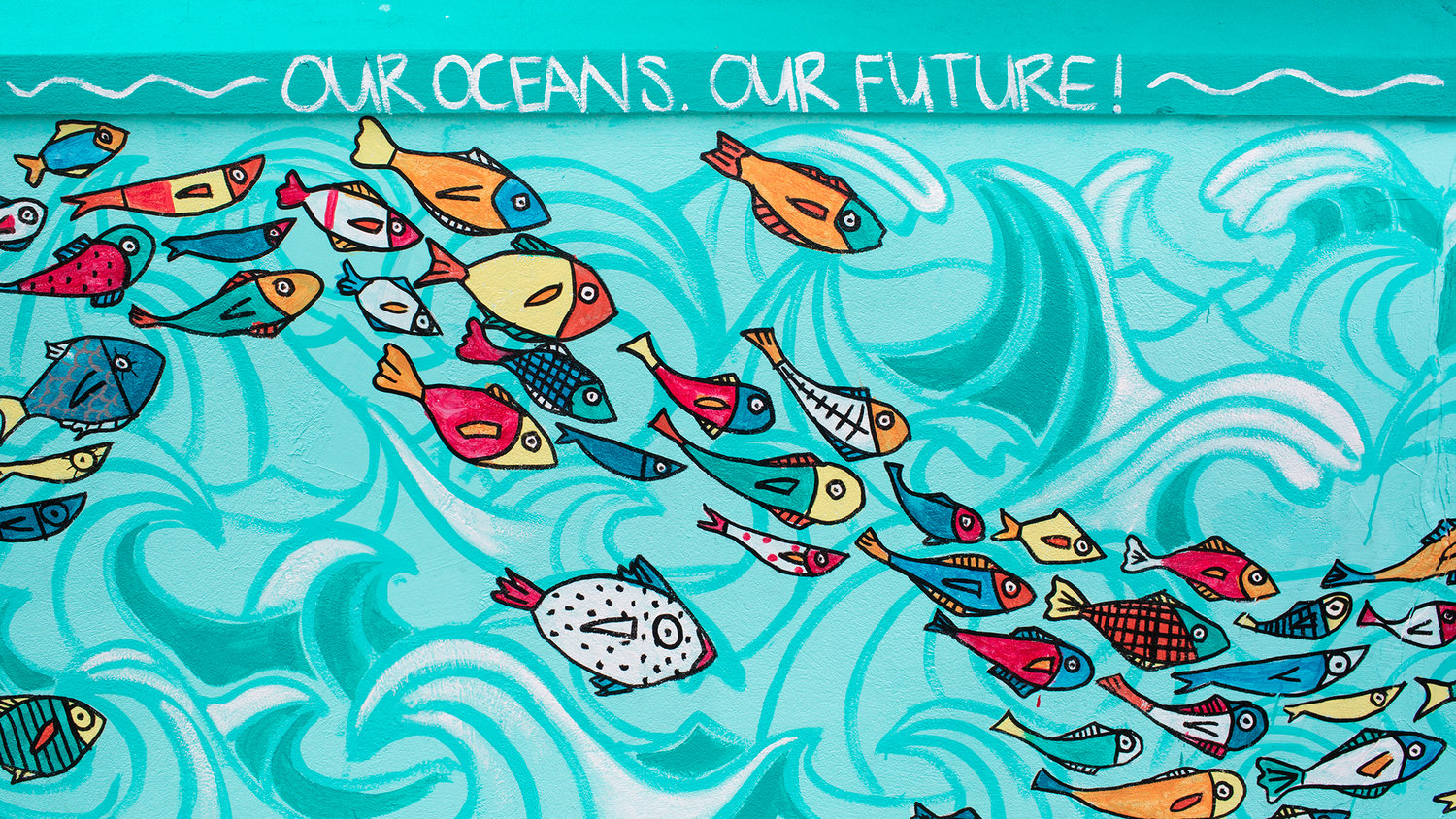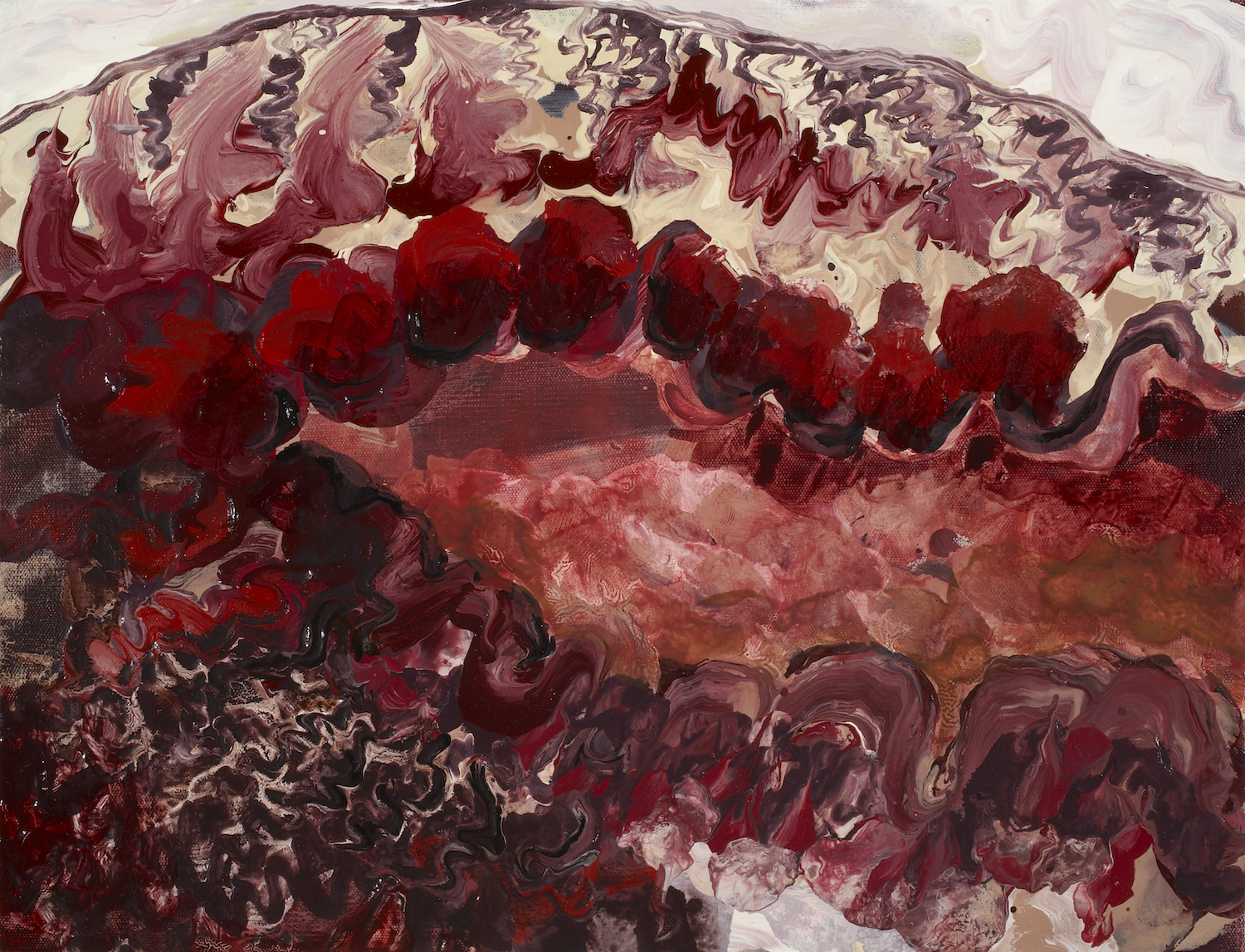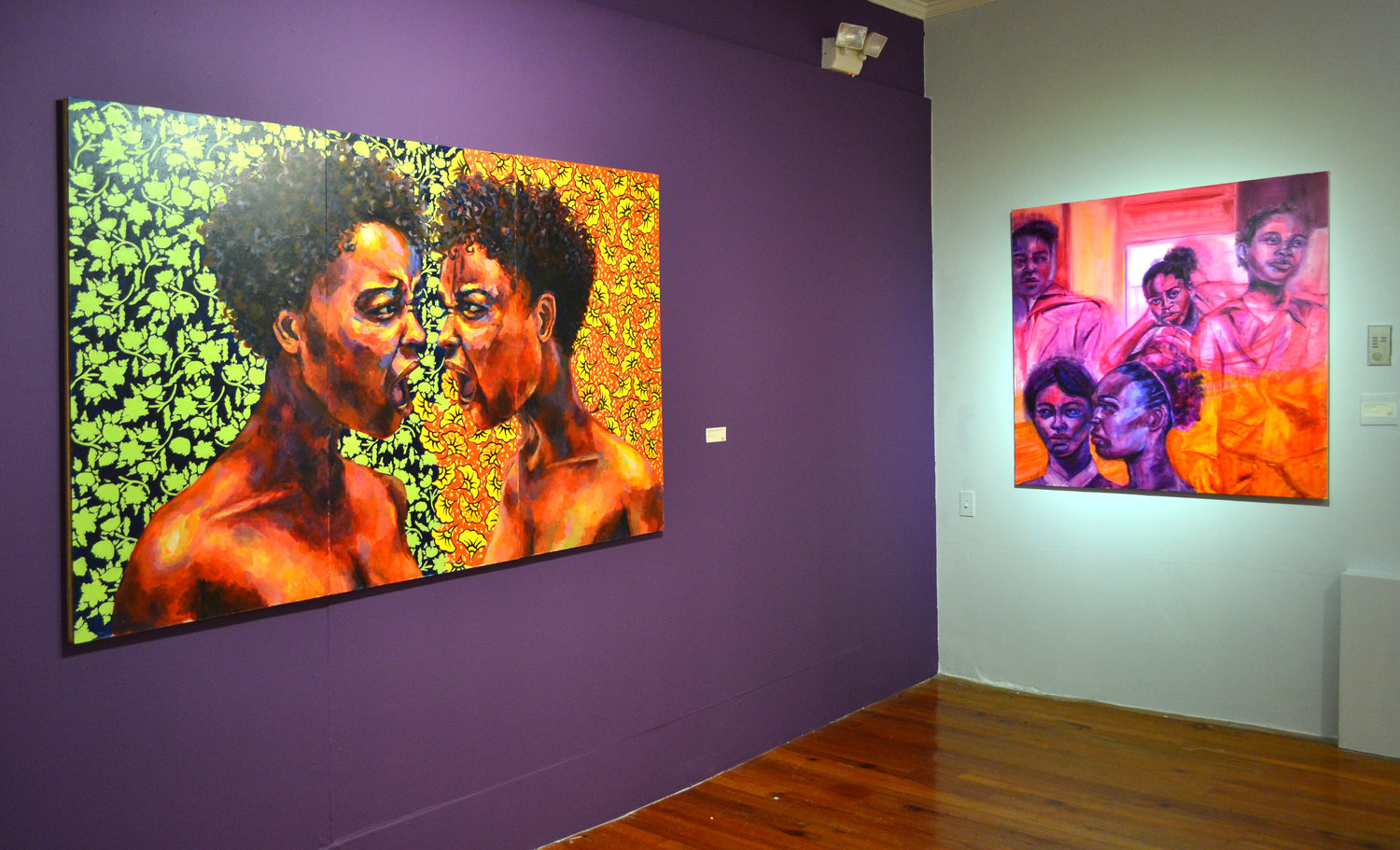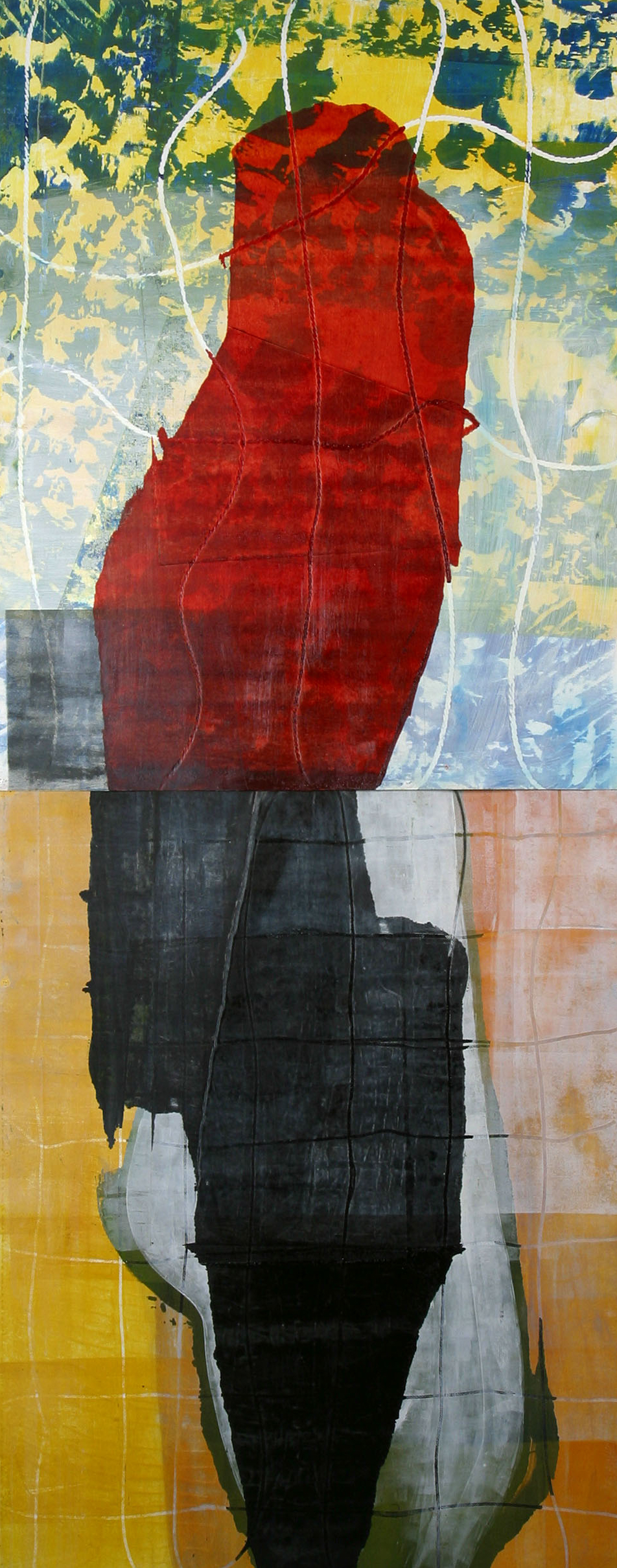By Natalie Willis.“Built on Sand,” (2003) by Dionne Benjamin-Smith, is in some ways the sister work to “Bishops, bishops everywhere and not a drop to drink,” (2003). Both works are of the same dimensions, which instantly makes us as viewers try to compare them and view them in the same plane when they are placed near each other, but, it is the critique and use of religion as their subject that makes them read like chapters in a book, feeding into each other and helping to inform a greater whole.
All posts by Natalie Willis
What’s On at the NAGB: Resuscitating the land, reclaiming lost spaces
By Malika N. Pryor-Martin. The National Art Gallery of The Bahamas opened on July 7, 2003, just three days before the country would celebrate its 30th year of independence from the British. Nearly a decade in the making, the NAGB was mandated with the task of preserving and propelling Bahamian culture through the visual arts.
Art Documenting History: Intersecting complex histories with art
By Dr Ian Bethell-Bennett. Art is a well-known document of history. All types of creative expression chronicle the moment they depict. Portraits, much like those on display in Museo Nacional del Prado in Madrid are examples of this, especially the Goyas, for example. This column chooses to focus on the interlocking of art and history: “Art History,” its learning and teaching. So much happens in this somewhat fraught intersection between art and history, especially in a country like ours, where scant attention is paid to culture, except for its commodification and consumption.
From The Collection: Amos Ferguson’s “Junkanoo Cow Face”
By Natascha Vazquez.
Bahamian artist and icon, Amos Ferguson radiantly portrays the spirit of Junkanoo through an energetic array of repeated imagery and texture in Junkanoo Cow Face – Match Me If You Can, an iconic piece in the Gallery’s National Collection. His interest in flattening the picture plane and depicting a graphic quality to the work is evident in this work, nodding to the style that he became widely known for. Ferguson used colour and repetition of form for impact and clarity. Arrangements of patterns flood his paintings, a visual language closely related to that of Bahamian culture, and in particular Junkanoo.
From the Collection: ‘Bishops, bishops everywhere and not a drop to drink’ (2003) by Dionne Benjamin-Smith
By Natalie Willis.Works dealing with the divine, with Christianity, with the spiritual, are very much rooted in what we consider to be part of our representation of Bahamianness. In looking to the work of Dionne Benjamin-Smith, an artist and graphic designer known for her pithy and no-holds-barred practice – and very informative and inclusive newsletter designed and created by herself and her partner – we can see a proudly proclaimed Bahamian woman who identifies with her Christianity taking acute aim at problems with the way we view religion in our country.
Mixed Media Summer Art Camp: Igniting creativity
By Malika. N Pryor-Martin. The National Art Gallery of The Bahamas’ (NAGB) Mixed Media Summer Art Camp (MMSAC), is a program designed with creativity, discovery, and fun in mind – every day. A blend of art exploration and classic camp activity, the MMSAC serves as a space where young people are learning without even knowing it. From the very youngest to the most senior participant, the goal of the camp is to encourage our campers to express the full range of their creative ideas.
World Oceans Day Mural: Protecting our seas and supporting public artworks
By Natalie Willis.A national institution of art coming together with one of the biggest hotel corporations doesn’t sound like your usual pairing – but public artwork has no prejudices, no bounds, and as such, the most unlikely collaborations can often be the most fruitful. The NAGB, along with Sandals Royal Bahamian and the Sandals Foundation have teamed up to bring forth a lighthearted public project with a serious message. For World Oceans Day, established visual artists in the community were commissioned to produce a vibrant wall mural with the idea of drawing attention to the need to not just protect our waters, but to truly care for them as they are such a strong part of what makes our country the place it is – in geography, in culture and especially in our history.
From the Collection: Lynn Parotti’s “The Blastocyst’s Ball: A Journey Through the Drug Induced stages of IVF”
By Natascha Vazques. Lynn Parotti is a Bahamian artist exploring themes of natural and biological landscape, those surrounding us and within us. In “The Blastocyst’s Ball,” Parotti displays a triptych of non-objective form and colour, alluding to something that may exist within biology or perhaps, more specifically, in our bodies. Each piece shows a unique arrangement but commonly shared hues and rigid texture created through repetition generate a strong sense of unity between them.
The Mark of a Woman: Portraits of black womanhood in the work of Gabrielle Banks.
By Natalie Willis. Reclining nudes, women posed ‘just so,’ we’re all quite accustomed to this kind of figuration and portraiture in the art world. Even those of us who are just dipping our toes into the wonders of the art world associate art with this kind of imagery. Art students at universities the world over can be found squinting in deepest concentration, poring over their depictions of a nude model before them – often a woman – and trying to figure out form, perspective, how to capture the ‘essence’ of this stranger they’ve met. It’s part of the canon, in many ways.
From the Collection: Michael Edwards’ “Untitled II”
By Natascha Vazquez. The interpretation of abstract art entails an inventiveness that allows you to discover for yourself the meaning behind the work. It’s an organic process, it has no equation or set of rules – the art presents itself and you are left with little information to process it. For many, this is unsettling. As humans, we yearn for understanding – we desire clear, detailed instruction. Abstract art provides none of that. Revolutionary colour field painter Mark Rothko says, “Art that truly engages us is felt even when you have turned your back on it.” There’s something really special about that – about feeling the sensation of a work beyond its physicality. It’s when you can feel the strength of the painting from across the room. You can stand in the space the artist once occupied and imagine him or her in that same spot, debating over the next smear of black or red pour or blue dot. Similarly, Jerry Saltz says, “Abstraction disenchants, re-enchants, detoxifies, destabilises, resists closure, slows perception, and increases our grasp of the world.”
